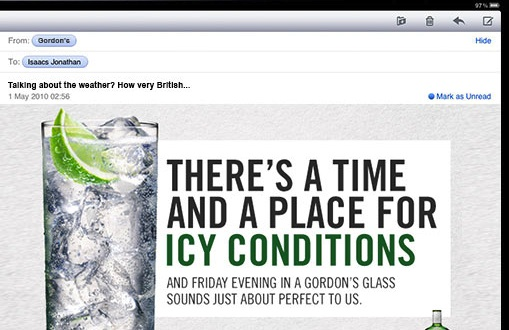
By Gavin Wheeler, CEO of Digital Marketing Agency, WDMP
To date there have been three seminal moments in my mobile life, and together they show just how far the mobile world has come.
The first time I used a mobile was in the early ‘90s when I was working at Toyota, I borrowed one while on a TV shoot. It weighed a ton and the lender looked traumatised as no doubt the call cost a fortune back then. The second was when I sent my first text in 1997 to announce we’d moved house – to the amazement of the recipients who had never seen one before, giving me great kudos. Then this year I paid my tax bill using the First Direct app on my iPhone!
The humble mobile has become so much more than a phone – it’s become a life support system, so diverse are its applications. Mobile CRM (or mCRM) is the new Customer Relationship Marketing – using mobiles as a way to find out more about what our customers are interested in, talk to them in a more informed way and engage with a much richer experience. But what does Mobile CRM look like in practice?
Local
With half of all local searches carried out on mobiles, local Mobile CRM is big. No longer will marketers have to hope that their messages are remembered when the consumer reaches the part of their journey that involves buying, but rather take advantage of their impulses in order to increase sales on the spot.
QR codes in-store or on posters incentivises consumers to register and gain discounts. Through GPS targeting, we can send offers via mobile as a customer walks past the shop.
Social
With more engagement on Facebook and Twitter happening via mobile than any other device, social media is a powerful way to encourage comment and sharing – especially in relation to consumer multi-screening, or using TV and mobile devices simultaneously. Integrating social media into TV advertising within your Mobile CRM strategy can create brand advocates and retain customers close to your brand even when they’re not in the purchasing funnel.
Curiosity
Consumers are inherently curious and mobiles are the easiest way for them to find out more about products or services. As they search, they are demonstrating brand interest and can be nurtured and developed into customers much more quickly than through conventional media channels. QR codes are a great way to feed consumer curiosity at the same time as gaining insight. Tesco recently tested the UK’s first interactive virtual grocery store at Gatwick Airport where travellers bought from virtual fridges with their smartphones – so their groceries could arrive at home as they did.
Texting
As texting by a brand can be deemed intrusive, be careful. However, if texts are relevant, added value service messages, they can be a powerful way to build customer relationships through emotional engagement. That’s why British Gas created its Appointment Reminder Service which uses SMS to send reminders in advance of an appointment, with options to reschedule. Its implementation led to a huge reduction in appointment related in-bound calls and it has improved customer satisfaction and brand perception.
What’s to come?
With NFC technology (payment via mobile devices) bubbling under – Google’s latest wallet app is becoming increasingly closer to a reality - the opportunities for Mobile CRM are set to grow exponentially in the UK. The latest EE ad with Kevin Bacon shows someone in the pub buying pork scratchings with their phone and we’re certainly heading that way.
Never before have we had a channel that enables marketers to get up so close and personal with customers and find out more about them wherever they are at any time of the day. Of course we must be careful to get permission to communicate first, and treat that permission sensitively. However, get it right and Mobile CRM offers an open door to the always on consumer.







